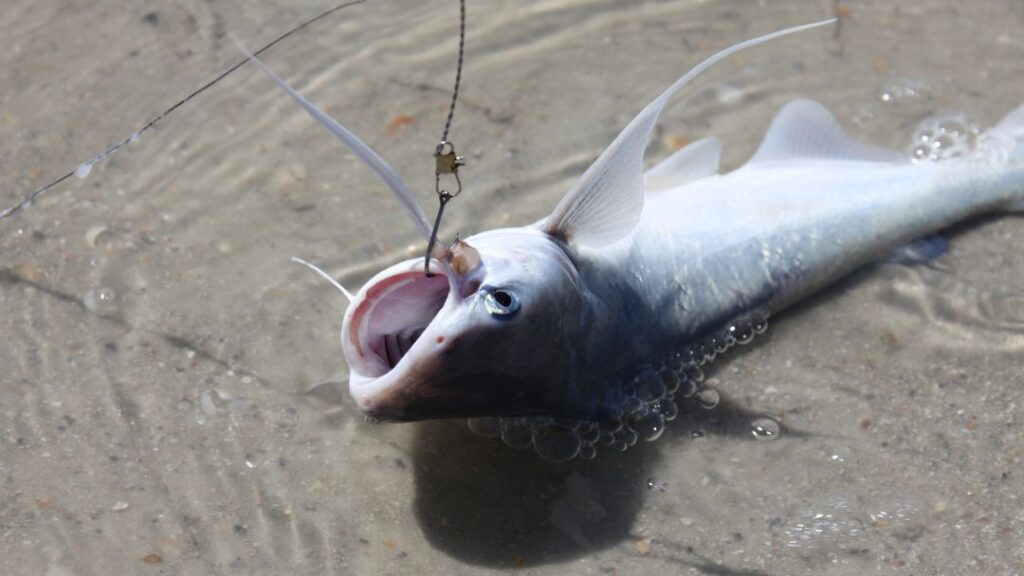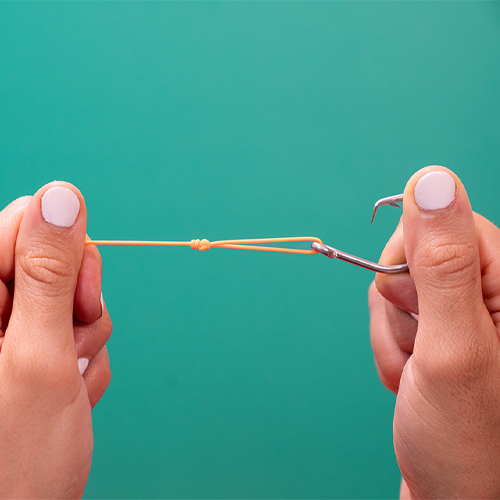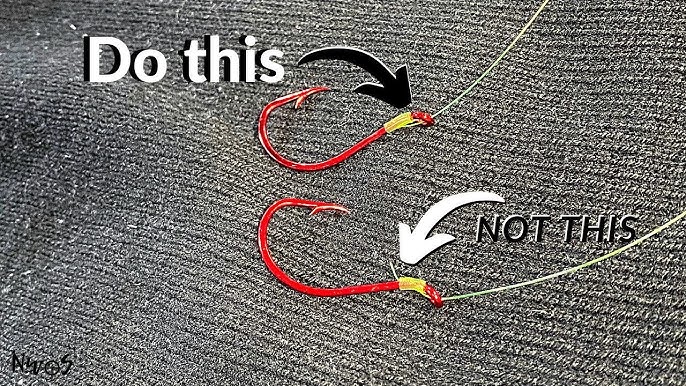Do Catfish Hook Themselves
Dozens of types of hooks are available for catfishing. They vary in design, style, pattern, size, color, weight, and material. Anglers choose them based on personal preferences. Correctly setting up the hook at the right time will ensure a successful fishing trip.
Do catfish hook themselves? Catfish don’t hook willingly on their own unless you are using circle hooks. But it can happen for other hook types occasionally. They may accidentally get hooked while they swim by and bite the hook. However, anglers most often need to set the hook of their own to lock the fish’s mouth inside this hard metal.
Do Catfish Hook Themselves?
Generally, catfish don’t hook willingly on their own unless you are using circle hooks.
But it can happen for other hook types occasionally. They may accidentally get hooked while they swim by and bite the hook.
Of course, like other fish, catfish won’t actively seek out hooks to bite and get themselves caught.
When they sense the scent of the bait or see the movement of the bait, they try to eat it and bite it.
Once the catfish bite the bait, you must set the hook. It is a good rule of thumb to wait 1-2 seconds after the strike before setting up this hard material.
You generally have 5-7 seconds to set the hook. Once you detect the bite and feel the weight, set the hook. If the catfish bite very aggressively, the faster you the hook set, the better it is.

Do Catfish Hook Themselves With Circle Hooks?
Circle hooks have a unique shape and ancient fish-hook patterns. Its working mechanism is a bit different than regular hooks. Fishermen don’t need to set circle hooks actively.
Its curved shape will result in an automatic sliding towards the tip of resistance and immerse itself in the jaw or one corner of the catfish’s mouth.
Instead of getting caught in the stomach cavity or throat of the catfish, the hook will set in the corner at the hinge of the jaw.
Anglers can release their fishing line freely from the spool or keep their rod tip at a lower position with maximum pressure to give the catfish a short dropback (less than 10 seconds).
Do Catfish Hook Themselves With Kahle Hooks?
Live bait anglers who actively fish in both fresh and saltwater often prefer using Kahle hooks. This kind of hook causes minimal damage to the catfish’s mouth.
Kahle hooks sometimes hook themselves, especially when the catfish is on a hard run. They try to pull hard and fast on the fishing line and escape from the angler’s control.
Its automatic hooking system is more likely to work when you use live bait, such as grasshoppers or leeches.
However, if you want to follow the catch-and-release fishing technique, it is best to avoid using Kahle hooks.
They will go deeper into the catfish’s mouth. Catfish are more likely to swallow them. This will cause severe injury and even death.
Can A Catfish Survive With A Hook?
According to several studies, more than 90% of catfish are likely to survive with a deep hook.
When a catfish shallows the hook in its gut or gills, it is best not to remove it. Trying to get off the hook may cause severe damage to the catfish.
Instead of extracting the hook, just cut off the fishing line as much as possible and release it quickly.
A deeply hooked catfish can live with non-stainless hooks. This material-based will rust out fairly quickly.
Even if it is a big saltwater hook, the stomach acids of catfish will dissolve the hook in no time.
But if it is a lip-hooked catfish, you can use a disgorging tool, such as Gemini Disgorger, to quickly and efficiently take out the deep set hooks from a catfish’s mouth.
Can A Catfish Survive With Several Hooks?
A catfish with several deep hooks in its throat, stomach, or other vital organs can still live as they have a faster wound healing rate. But of course, it needs to be a de-stressing environment.
However, if the hooks already cause serious injuries and they are living in a stressful environment, their feed rate and swimming ability will decrease.
As a result, predators are more likely to catch them as they can’t implement a hard swimming approach.
What Hooks Used For Catfish?
Anglers mainly use four standard hooks for catfishing. One of the most common ones is circle hooks.
If you want to practice a catch-and-release fishing approach, circle hooks are the best choice. Circle hooks are less likely to get into the catfish’s throat, roof of the mouth, or stomach.
Kahle hooks are another widely used fishing gear. Fishermen who generally use live bait and prefer to keep every catfish they catch will love Kahle hooks.
This type of hook has a wide gap to accommodate different types of live baits, such as shiners, fathead minnows, shrimp, stinkbait, chicken livers, etc.
Many anglers also use Limerick hooks for catfishing. People mainly use it for catching channels and flathead catfish.
How Many Hooks To Carry With For Catfishing?
It will vary depending on several factors, such as catfish size, bait type, etc. If you are going to spend the whole day catfishing, keep at least 3-4 hooks.
Imagine what you will do if three catfish swallow your three hooks within an hour. You won’t surely return to your home to get a few more.
Hence, it is best to keep 6-10 fishing hooks to stay in a safe zone. Make sure to come with various types, sizes, and styles of fishing hooks if you are targeting different sizes and types of catfish.
How To Use Hooks To Catch Catfish?
Step: 01) The first important task is choosing the right hooks and baits depending on what type of catfish you want to catch.
Step: 02) Put the hooks on the fishing line carefully. It is best to use two or three hooks on the fishing line for better ground coverage. This will help you potentially catch multiple fish at once.
Step: 03) Now, thread the baits onto the fishing hooks through the center of the body. Cast your line out into the water.
Step: 04) Hold the fishing rod at about waist level. Keep your knees a little bent to give your backs a break from gravity’s pull and put less backward pressure on the discs,
Step: 05) Point the fishing line in the right direction. Cast your fishing line out into the water and wait at least 45 minutes before casting elsewhere.
Step: 06) Once you feel a sudden abrupt pull or weight, promptly set up the hook into the catfish’s mouth by pulling back the fishing rod.
Step: 07) After a successful hook setup, retrieve or pull the fishing line back into the reel. Follow a slow and steady approach to maintain constant tension on the line.
Step: 08) Finally, onboard the fish carefully and use pliers to remove the hook from the fish’s mouth.
Final Thoughts
Catfish are tough and hard-fighting fish. If you are targeting bigger catfish species, correctly setting up the hook is crucial.
If you are a new angler, circle hooks appear to be a better choice for catfishing. It will help you set the hooks automatically. You don’t need to put in too much effort.
But always stay alert. Once the catfish bite the hooks, wait for 1-2 seconds to lock its mouth inside the hook properly. But don’t delay too much. Reel in within 5-7 seconds.
Hopefully, you got a clear overview of “Do catfish hook themselves?” Let me know if you still have any queries regarding this topic.




